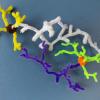Robust versus optimal strategies for two-alternative forced choice tasks.
It has been proposed that animals and humans might choose a speed-accuracy tradeoff that maximizes reward rate. For this utility function the simple drift-diffusion model of two-alternative forced-choice tasks predicts a parameter-free optimal performance curve that relates normalized decision times to error rates under varying task conditions. However, behavioral data indicate that only ≈ 30% of subjects achieve optimality, and here we investigate the possibility that, in allowing for uncertainties, subjects might exercise robust strategies instead of optimal ones. We consider two strategies in which robustness is achieved by relinquishing performance: maximin and robust-satisficing. The former supposes maximization of guaranteed performance under a presumed level of uncertainty; the latter assumes that subjects require a critical performance level and maximize the level of uncertainty under which it can be guaranteed. These strategies respectively yield performance curves parameterized by presumed uncertainty level and required performance. Maximin performance curves for uncertainties in response-to-stimulus interval match data for the lower-scoring 70% of subjects well, and are more likely to explain it than robust-satisficing or alternative optimal performance curves that emphasize accuracy. For uncertainties in signal-to-noise ratio, neither maximin nor robust-satisficing performance curves adequately describe the data. We discuss implications for decisions under uncertainties, and suggest further behavioral assays.
2010.J Math Psychol, 54(2):230-246.

